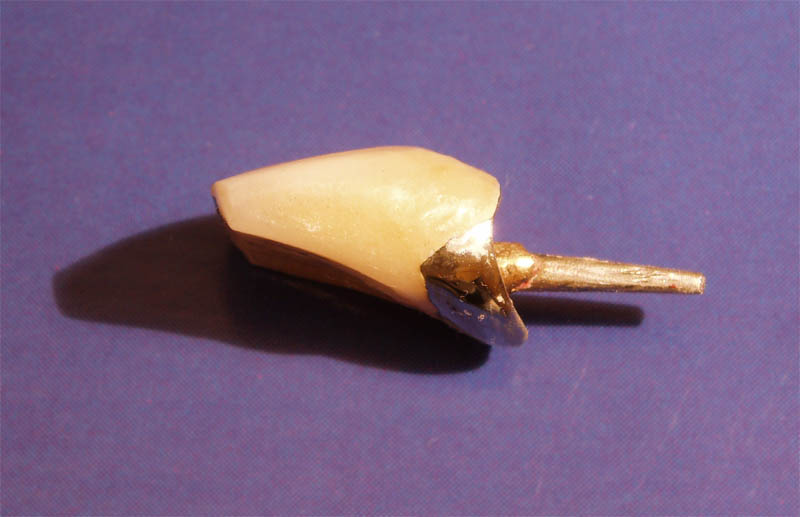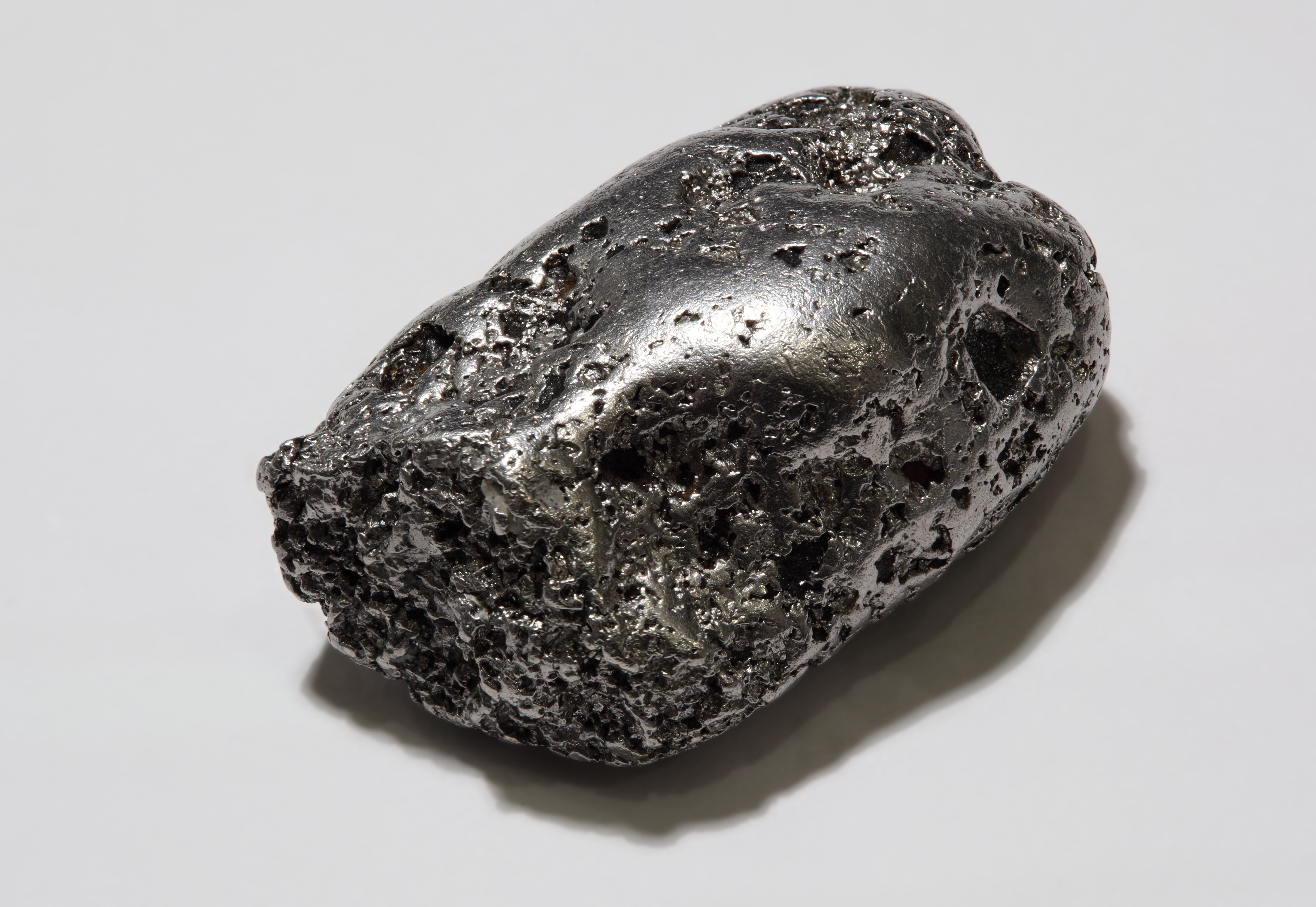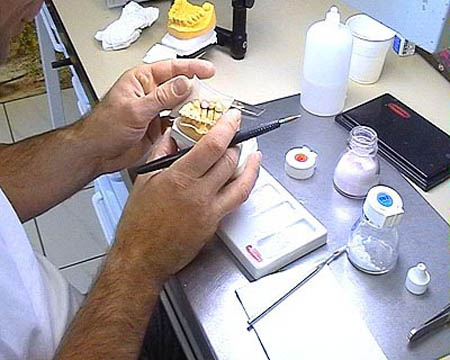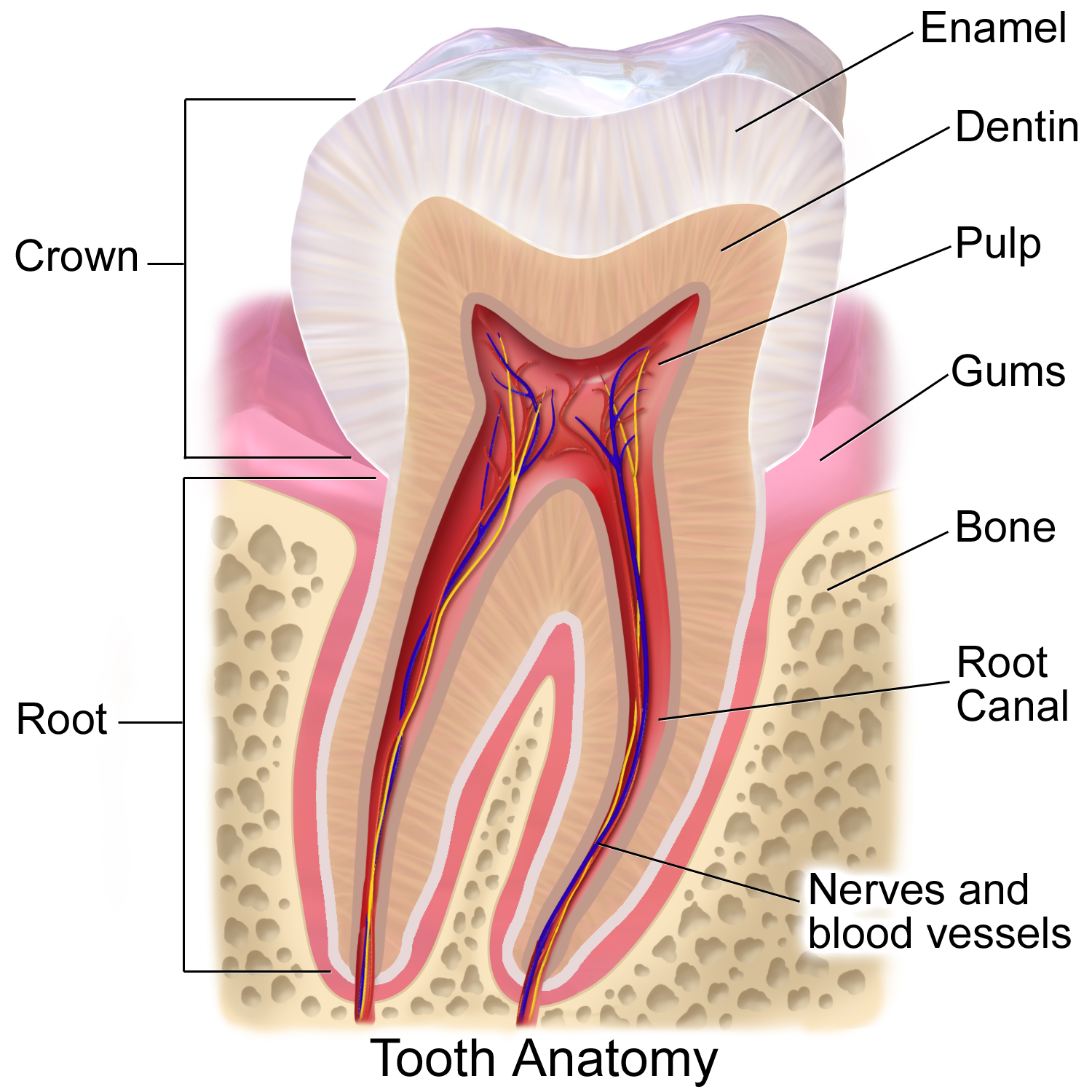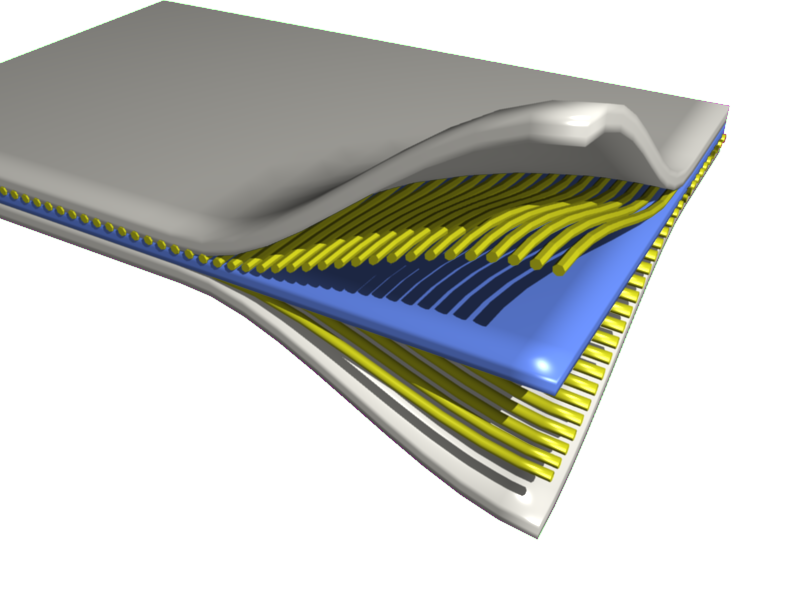|
Pivot Tooth
The pivot tooth is a fixed dental Prosthodontics, prosthesis used to rebuild a Human tooth, tooth. It is a type of , but it is an independent supplement and usually consists of a pin or peg and a full Crown (dental restoration), crown permanently connected (i.e., without Dental cement, cement) and placed in the patient's oral cavity during a single visit. It often includes a protective element called a ferrule. Pivot teeth were developed to shorten the execution cycle and skip some laboratory steps. Although they could last for many years when used according to indications and contraindications, pivot teeth did not meet the requirements and are no longer used. Better results are achieved by permanently cementing the crown-root foundation and further crafting the crown as if it were a natural tooth stump prepared for the crown. Otherwise, the laboratory connection of the crown to the foundation carries a greater risk of inaccuracies, subsequent crown leakage, cement washout, and too ... [...More Info...] [...Related Items...] OR: [Wikipedia] [Google] [Baidu] |
Platinum
Platinum is a chemical element; it has Symbol (chemistry), symbol Pt and atomic number 78. It is a density, dense, malleable, ductility, ductile, highly unreactive, precious metal, precious, silverish-white transition metal. Its name originates from Spanish language, Spanish , a diminutive of "silver". Platinum is a member of the platinum group of elements and group 10 element, group 10 of the periodic table of elements. It has six naturally occurring isotopes. It is one of the Abundance of elements in Earth's crust, rarer elements in Earth's crust, with an average abundance of approximately 5 microgram, μg/kg, making platinum about 30 times rarer than gold. It occurs in some nickel and copper ores along with some Native element mineral, native deposits, with 90% of current production from deposits across Russia's Ural Mountains, Colombia, the Sudbury Basin, Sudbury basin of Canada, and a large reserve in South Africa. Because of its scarcity in Earth's crust, only a f ... [...More Info...] [...Related Items...] OR: [Wikipedia] [Google] [Baidu] |
Dental Technician
A dental technician is a member of the dental team who, upon prescription from a dental clinician, constructs custom-made restorative and dental appliances. There are four major disciplines within dental technology. These are ''fixed prosthesis'' including Crown (dentistry), crowns, bridge (dentistry), bridges and Dental implant, implants; ''removable prosthesis'', including dentures and removable partial dentures; ''maxillofacial prosthesis'', including ocular prosthesis and craniofacial prosthesis; and ''orthodontics and auxiliaries'', including orthodontic technology, orthodontic appliances and mouthguards. The dentist communicates with the dental technician with prescriptions, drawings, and measurements taken from the patient. The most important aspect of this is a Impression (dental), dental impression into which the technician flows a Plaster#In medicine, gypsum dental stone to create a replica of the patient's anatomy known as a dental cast. A technician can then use this ... [...More Info...] [...Related Items...] OR: [Wikipedia] [Google] [Baidu] |
Polymerization
In polymer chemistry, polymerization (American English), or polymerisation (British English), is a process of reacting monomer molecules together in a chemical reaction to form polymer chains or three-dimensional networks. There are many forms of polymerization and different systems exist to categorize them. In chemical compounds, polymerization can occur via a variety of reaction mechanisms that vary in complexity due to the functional groups present in the reactants and their inherent steric effects. In more straightforward polymerizations, alkenes form polymers through relatively simple radical reactions; in contrast, reactions involving substitution at a carbonyl group require more complex synthesis due to the way in which reactants polymerize. As alkenes can polymerize in somewhat straightforward radical reactions, they form useful compounds such as polyethylene and polyvinyl chloride (PVC), which are produced in high tonnages each year due to their usefulnes ... [...More Info...] [...Related Items...] OR: [Wikipedia] [Google] [Baidu] |
Dental Impression
A dental impression is a negative imprint of hard and soft tissues in the mouth from which a positive reproduction, such as a cast or model, can be formed. It is made by placing an appropriate material in a dental impression tray which is designed to roughly fit over the dental arches. The impression material is liquid or semi-solid when first mixed and placed in the mouth. It then sets to become an elastic solid, which usually takes a few minutes depending upon the material. This leaves an imprint of a person's dentition and surrounding structures of the oral cavity. Digital impressions using CAD/CAM dentistry, computerized scanning are now available. Uses Impressions, and the study models, are used in several areas of dentistry including: * diagnosis and treatment planning * prosthodontics (such as making dentures) * orthodontics * restorative dentistry (e.g. to make impressions of teeth which have been prepared to receive indirect extracoronal restorations such as crowns, b ... [...More Info...] [...Related Items...] OR: [Wikipedia] [Google] [Baidu] |
Molar (tooth)
The molars or molar teeth are large, flat teeth at the back of the mouth. They are more developed in mammals. They are used primarily to grind food during chewing. The name ''molar'' derives from Latin, ''molaris dens'', meaning "millstone tooth", from ''mola'', millstone and ''dens'', tooth. Molars show a great deal of diversity in size and shape across the mammal groups. The third molar of humans is sometimes vestigial. Human anatomy In humans, the molar teeth have either four or five cusps. Adult humans have 12 molars, in four groups of three at the back of the mouth. The third, rearmost molar in each group is called a wisdom tooth. It is the last tooth to appear, breaking through the front of the gum at about the age of 20, although this varies among individuals and populations, and in many cases the tooth is missing. The human mouth contains upper (maxillary) and lower (mandibular) molars. They are: maxillary first molar, maxillary second molar, maxillary third mol ... [...More Info...] [...Related Items...] OR: [Wikipedia] [Google] [Baidu] |
Hutchinson's Teeth
Hutchinson's teeth is a sign of congenital syphilis. Affected people have Human tooth, teeth that are smaller and more widely spaced than normal and which have notches on their biting surfaces. It is named for Jonathan Hutchinson, Sir Jonathan Hutchinson, a British surgeon and pathologist, who first described it. Hutchinson's teeth form part of Hutchinson's triad. See also * List of cutaneous conditions References External links Medical signs Cutaneous congenital anomalies Syphilis Teeth {{med-sign-stub ... [...More Info...] [...Related Items...] OR: [Wikipedia] [Google] [Baidu] |
Erosion
Erosion is the action of surface processes (such as Surface runoff, water flow or wind) that removes soil, Rock (geology), rock, or dissolved material from one location on the Earth's crust#Crust, Earth's crust and then sediment transport, transports it to another location where it is deposit (geology), deposited. Erosion is distinct from weathering which involves no movement. Removal of rock or soil as clastic sediment is referred to as ''physical'' or ''mechanical'' erosion; this contrasts with ''chemical'' erosion, where soil or rock material is removed from an area by Solvation, dissolution. Eroded sediment or solutes may be transported just a few millimetres, or for thousands of kilometres. Agents of erosion include rainfall; bedrock wear in rivers; coastal erosion by the sea and Wind wave, waves; glacier, glacial Plucking (glaciation), plucking, Abrasion (geology), abrasion, and scour; areal flooding; Aeolian processes, wind abrasion; groundwater processes; and Mass wastin ... [...More Info...] [...Related Items...] OR: [Wikipedia] [Google] [Baidu] |
Tooth Enamel
Tooth enamel is one of the four major Tissue (biology), tissues that make up the tooth in humans and many animals, including some species of fish. It makes up the normally visible part of the tooth, covering the Crown (tooth), crown. The other major tissues are dentin, cementum, and Pulp (tooth), dental pulp. It is a very hard, white to off-white, highly mineralised substance that acts as a barrier to protect the tooth but can become susceptible to degradation, especially by acids from food and drink. In rare circumstances enamel fails to form, leaving the underlying dentin exposed on the surface. Features Enamel is the hardest substance in the human body and contains the highest percentage of minerals (at 96%),Ross ''et al.'', p. 485 with water and organic material composing the rest.Ten Cate's Oral Histology, Nancy, Elsevier, pp. 70–94 The primary mineral is hydroxyapatite, which is a crystalline calcium phosphate. Enamel is formed on the tooth while the tooth develops wit ... [...More Info...] [...Related Items...] OR: [Wikipedia] [Google] [Baidu] |
Porcelain
Porcelain (), also called china, is a ceramic material made by heating Industrial mineral, raw materials, generally including kaolinite, in a kiln to temperatures between . The greater strength and translucence of porcelain, relative to other types of pottery, arise mainly from Vitrification#Ceramics, vitrification and the formation of the mineral mullite within the body at these high temperatures. End applications include tableware, ceramic art, decorative ware such as figurines, and products in technology and industry such as Insulator (electricity), electrical insulators and laboratory ware. The manufacturing process used for porcelain is similar to that used for earthenware and stoneware, the two other main types of pottery, although it can be more challenging to produce. It has usually been regarded as the most prestigious type of pottery due to its delicacy, strength, and high degree of whiteness. It is frequently both glazed and decorated. Though definitions vary, po ... [...More Info...] [...Related Items...] OR: [Wikipedia] [Google] [Baidu] |
Composite Material
A composite or composite material (also composition material) is a material which is produced from two or more constituent materials. These constituent materials have notably dissimilar chemical or physical properties and are merged to create a material with properties unlike the individual elements. Within the finished structure, the individual elements remain separate and distinct, distinguishing composites from mixtures and solid solutions. Composite materials with more than one distinct layer are called ''composite laminates''. Typical engineered composite materials are made up of a binding agent forming the ''matrix'' and a Filler (materials), filler material (particulates or fibres) giving ''substance'', e.g.: * Concrete, reinforced concrete and masonry with cement, lime or Mortar (masonry), mortar (which is itself a composite material) as a binder * Composite wood such as glulam and plywood with wood glue as a binder * Reinforced plastics, such as fiberglass and fibre-rein ... [...More Info...] [...Related Items...] OR: [Wikipedia] [Google] [Baidu] |
Poly(methyl Methacrylate)
Poly(methyl methacrylate) (PMMA) is a synthetic polymer derived from methyl methacrylate. It is a transparent thermoplastic, used as an engineering plastic. PMMA is also known as acrylic, acrylic glass, as well as by the trade names and brands Crylux, Walcast, Hesalite, Plexiglas, Acrylite, Lucite, PerClax, and Perspex, among several others ( see below). This plastic is often used in sheet form as a lightweight or shatter-resistant alternative to glass. It can also be used as a casting resin, in inks and coatings, and for many other purposes. It is often technically classified as a type of glass, in that it is a non-crystalline vitreous substance—hence its occasional historic designation as ''acrylic glass''. History The first acrylic acid was created in 1843. Methacrylic acid, derived from acrylic acid, was formulated in 1865. The reaction between methacrylic acid and methanol results in the ester methyl methacrylate. It was developed in 1928 in several different la ... [...More Info...] [...Related Items...] OR: [Wikipedia] [Google] [Baidu] |
